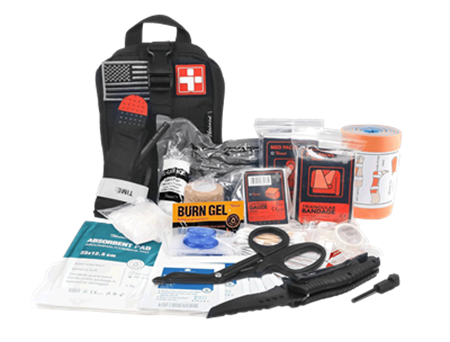
|
Hey, I'm handing you this brand new First-Aid Trauma Kit Today. 
This kit is 82 pieces of life-saving first-aid items, packed inside of a rugged waterproof Military bag that weighs less than 2 pounds. Everything from a tourniquet, large bandages, gauze, a razor sharp knife, burn gell, to gloves and medical tape. It's the ultimate first aid kit that instantly prepares you for any emergency. Read more about what's inside and why you should have one (or more) Plus I'm giving it away to you for a massive discount today. Think of it as a thank you for being a subscriber and loyal customer. Reveal insane price I'm giving these away for But this deal isn't going to last. People are already grabbing 5 at a time to stash in their vehicles and give away as gifts. So if you go to enter your information in and the page says sold out, I'm sorry… But if you're still able to pick one up, I highly suggest you do it now while you still can. Grab Your Brand New LOADED First-Aid Trauma Kit For a STEAL Here tinctive shape or color (sight), by emitting certain sounds (hearing), or even by behaviour patterns. Often a combination of these is used. Among human beings, the sense of sight is usually in charge of recognizing other members of the same species, with maybe the subconscious help of smell. In particular, the human brain has a disproportionate amount of processing power dedicated to finely analyze the features of a human face. This is why most humans are able to distinguish human beings from one other (barring look-alikes), and a human being from a similar species like some anthropomorphic ape, with only a quick glance. Intra-species recognition systems are often subtle. For example, ornithologists have great difficulty in distinguishing the chiffchaff from the willow warbler by eye, and there is no evidence that the birds themselves can do so other than by the different songs of the male. Sometimes, intra-species recognition is fallible: in many species of frog, the males are commonly seen copulating with females of the wrong species or even with inanimate objects. Heliconius charithonia displays intra-species recognition by roosting with conspecifics. They do this with the help of UV rhodopsins in the eye that help them distinguish between ultraviolet yellow pigments and regular yellow pigments. They have also been known to emit chemical cues to recognize memb
|
